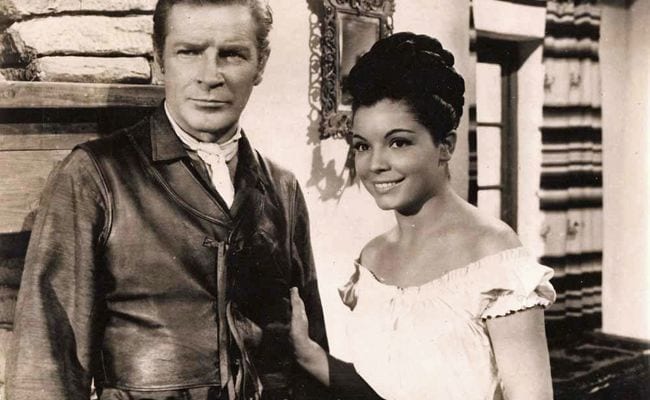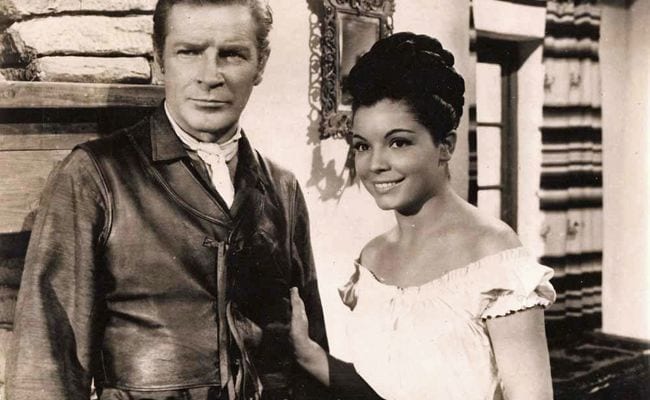
A Spaghetti Western is a title that generally refers to any Italian produced and directed western from the ’60s and ’70s that has post-synched audio due to a multilingual cast of Spaniards, Germans, and up-and-coming or has-been American actors, in addition to Italians. Because they were often low-budget productions, directors shot them at locations in Europe—usually southern Spain or Italy—that resemble the American Southwest. At first, like all Euro Westerns, they sought to reproduce the characters and places from the traditional westerns that Hollywood had long used as vehicles for box-office juggernauts like John Wayne. But because of the artistic and political sensibilities of their Italian filmmakers, even the earliest Spaghetti Westerns oozed with a style and substance that was far removed from any Hollywood western.
While Hollywood manufactured its westerns using carefully regulated formulas meant to turn an easy profit, low-budget Spaghetti Westerns were put together by small crews and featured unknown or has-been actors who worked to fulfill one man’s vision. Since this one man was, more often than not, an Italian director outside the confines of the big studio system, he was able to take risks, and it was these risks that eventually created the foundation of the genre. In contrast to traditional westerns, the men in Spaghetti Westerns are dirty, the women are sensual, the violence is extreme, the music is experimental, the cinematography raw, and the themes thoughtful.
Although the ingredients that make-up the genre’s foundation were not blended together into a flavorful whole until Sergio Leone, the master chef of Italy, came onto the scene with his 1964 Clint Eastwood classic Fistful of Dollars, audiences got their first taste of the Spaghetti Western in 1961 with the release of The Savage Guns. Taking place near the American-Mexican border in 1870, the film tells the tale of a retired Confederate officer named Mike Summers (Don Taylor) who, after vowing to never use his gun again, has settled down in a small town where he hopes to live at peace with his wife. The town of his choosing, however, is soon terrorized by Danny Pose (Alex Nicol), the violent leader of a gang of outlaws. Summer avoids picking up his gun for as long as he can, but when the drifting gunslinger Steve Fallon (Richard Basehart) comes to town and confronts Pose and his gang, Summer has no choice but to help.
I can’t offer an accurate review of the film, because its English version is buried deep in the Turner Classic Movies (TCM) archives and is shown so infrequently that I couldn’t find a single bootleg copy, which forced me to watch it in Spanish, a language I don’t speak. But I can say that in spite of it being a British rather than Italian production, missing the operatic musical score that would later define the genre, having a lead actor who tries way too hard to imitate John Wayne, and being overly reliant on dialogue (though this conclusion of mine could be due to the language barrier), The Savage Guns did evoke enough of what I know as a Spaghetti Western for me to consider it the beginning of the genre.
Supposedly, it was the first western shot on location in southern Spain, and regardless of whether this is true or not, The Savage Guns is certainly the first western to put that beautifully colorless wasteland of a desert on full display. If the soulless town and hellish agaves of the film are not enough to conjure the feeling that later Spaghetti Westerns would embrace, the supporting cast of Spanish B-actors playing Mexican outlaws along with the anti-hero protagonists—”the good and the bad, the strong and the weak,” the trailer for the film states, “sometimes it was hard to tell which was which”—certainly does. Then there is the splendidly violent scene in which the gunslinger Fallon’s hands are crushed under the wheels of a wagon, which obviously inspired the hand-crushing scene in Django (1966), one of the best films of the genre.
Since I watched The Savage Guns in Spanish, I can’t comment too much on the story, but I can say that the gunplay is better than the standard Hollywood affair in its creativity and immediacy. Towards the end of the film, for example, the character of Fallon shoots down a line of outlaws when their backs are turned to him. I can’t recall any John Wayne-type protagonist ever doing, or even considering, such an act. And it’s these types of desperate anarchic acts of violent vengeance that give Spaghetti Westerns their edge; it’s how they, at their best, exploit the virtues of the traditional Hollywood western while subverting the morality of them. While The Savage Guns is nowhere close to being the best the genre has to offer, it is the first offering of its kind, and for that reason alone it’s worth learning Spanish, or at least sending TCM a letter requesting them to release the English version to the public.


![Call for Papers: All Things Reconsidered [MUSIC] May-August 2024](https://www.popmatters.com/wp-content/uploads/2024/04/all-things-reconsidered-call-music-may-2024-720x380.jpg)



